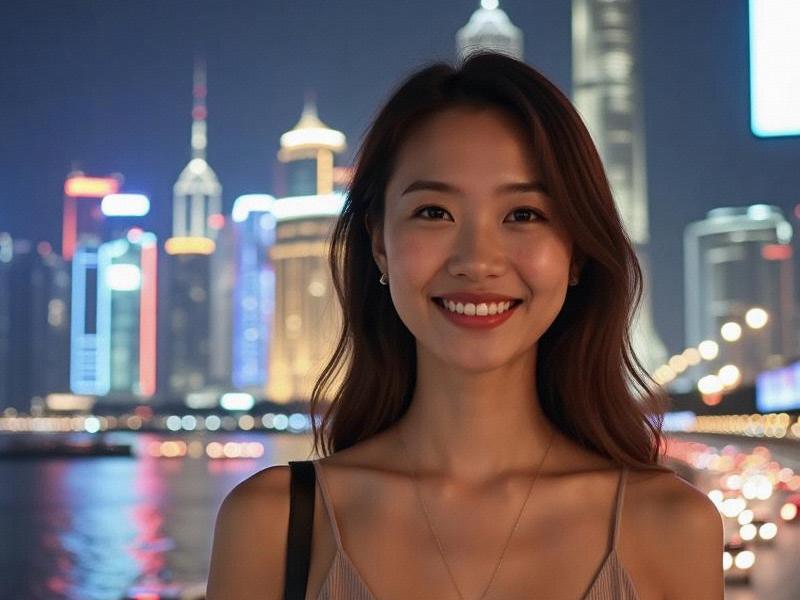Shanghai Style: The Evolution of Beauty and Fashion in China's Cosmopolitan Capital
⏱ 2025-06-10 01:00 🔖 阿拉爱上海娱乐论坛
📢0℃

The morning light filters through the plane trees lining Shanghai's Former French Concession as 28-year-old makeup artist Li Yuning prepares for another day of transforming clients at her boutique studio. Her workstation displays an intriguing mix - French luxury cosmetics sit beside traditional Chinese herbal remedies, while her computer streams the latest Korean beauty tutorials. This cosmopolitan fusion perfectly encapsulates Shanghai's unique approach to beauty, where East meets West in endlessly creative ways.
Shanghai's beauty industry has exploded into a $12.8 billion market, growing at 18% annually - nearly triple the national average. The city now hosts 42 international cosmetic brands' China headquarters and over 5,000 beauty salons ranging from traditional "barber street" shops to high-tech skincare clinics. What makes Shanghai's market remarkable isn't just its size, but its sophistication. Local consumers demonstrate remarkable beauty IQ - 78% can name active ingredients in their products, compared to 52% nationally. This educated consumer base has forced brands to innovate, leading to Shanghai-specific product lines like Estée Lauder's "White Tea" series developed specifically for the city's humid climate and pollution challenges.
The Shanghai beauty look has evolved into something distinctly different from both Western ideals and traditional Chinese standards. Market research reveals local preferences for "transparent makeup" (light coverage emphasizing natural skin texture), "tea-colored brows" (softer than Korea's sharp arches), and "dragon eye" liner (a subtle wing inspired by classical paintings). These trends reflect Shanghai women's celebrated balance between modernity and tradition - what sociologists call "the Shanghai compromise" between global trends and cultural authenticity.
上海龙凤419自荐
Entrepreneurial women are driving this beauty revolution. Over 60% of Shanghai's beauty startups are founded by women under 35, like Chen Xiaoyu whose "Garden Shanghai" brand repackages traditional Chinese medicine concepts into modern skincare. Digital platforms have enabled these innovators to bypass traditional gatekeepers - Douyin (TikTok) beauty tutorials by Shanghai creators attract 280 million daily views, while Xiaohongshu (Little Red Book) has become the go-to for honest product reviews. "Shanghai women don't wait for trends - we crteeathem," says Chen, whose rosehip-infused serum now sells in 17 countries.
Fashion tells a parallel story of cultural synthesis. The Shanghainese "cheongsam 2.0" movement has reinvented the traditional qipao with stretch fabrics, minimalist cuts and pockets (a practical addition local women demanded). These modern interpretations now account for 35% of high-end fashion sales in the city. Meanwhile, Shanghai's street style has developed its own signature - think tailored separates in muted tones accented with one bold traditional element, like embroidered shoes or jade jewelry. This "Shanghai uniform" appears everywhere from corporate offices to art galleries, blending professionalism with personality.
上海花千坊龙凤
Beauty pageants and fashion shows reveal shifting ideals. The Miss Shanghai competition dropped height requirements in 2022, while the Shanghai Fashion Week casting now features diverse models ranging from university students to silver-haired grandmothers. "We're moving beyond rigid standards to celebrate Shanghainese beauty in all its forms," explains pageant director Wang Lili. This inclusivity extends to advertising, where 42% of local beauty campaigns now feature "real women" rather than professional models.
The business of beauty has become serious economics. Shanghai's cosmetics R&D centers file over 1,200 patents annually, focusing on "green chemistry" innovations like biodegradable exfoliants. The city's beauty exports have grown 340% since 2020, with Southeast Asian markets particularly eager for Shanghai-developed products that bridge Asian and Western beauty traditions. Investment pours in accordingly - L'Oréal recently committed $140 million to expand its Shanghai innovation center, calling the city "the world's most important beauty laboratory."
爱上海419
Challenges persist beneath the glamorous surface. The pressure to maintain Shanghai's exacting beauty standards weighs heavily, with 68% of women under 35 reporting stress about appearance maintenance. Counterfeit products remain an issue despite government crackdowns, and the industry grapples with sustainability concerns as single-use face masks generate 12 tons of daily waste. Yet the overall trajectory points toward a more inclusive, innovative future - one where Shanghai doesn't just follow global beauty trends, but leads them.
As twilight descends on the Bund, the neon signs of luxury boutiques reflect in the Huangpu River alongside the glowing screens of livestreamers demonstrating the latest makeup techniques. In this play of light and reflection, one glimpses Shanghai's true beauty secret - its ability to honor tradition while constantly reinventing itself, creating a standard that's distinctly Shanghainese yet universally aspirational.
Shanghai and Its Surroundings: A Blend of Tradition and ModernityThe Velvet Rope Revolution: How Shanghai's Clubs Redefined Luxury EntertainmentThe Latest Developments and Highlights in Shanghai"Beyond Qipao & Cosplay: The New Archetypes of Shanghai Femininity in the Digital Age"The Shanghai Sheen: How China's Most Cosmopolitan Women Are Rewriting Beauty StandardsNeon Renaissance: How Shanghai's Nightlife Venues Are Redefining Urban EntertainmentThe Bamboo Scaffolding Revolution: How Shanghai Is Building the Future While Preserving Its SoulThe Yangtze Delta Megaregion: How Shanghai's Economic Transformation Reshapes Eastern ChinaShanghai Entertainment Venues: A Glamorous and Sophisticated SceneShanghai 2025: Where Futurism Meets Heritage in China's Global Metropolis
Shanghai 2030: The Making of a Global City ClusterThe Velvet Rope Revolution: How Shanghai's Elite Clubs Are Reshaping China's Nightlife CultureShanghai's Nightlife Renaissance: How Entertainment Venues Are Redefining Urban LeisureShanghai and the Yangtze Delta: China's Economic Engine Reshapes Urban FuturesShanghai's Nightlife Renaissance: How Luxury Entertainment Clubs Are Redefining Urban LeisureThe Yangtze River Delta Megaregion: How Shanghai and Its Neighbors Are Redefining Urban DevelopmentShanghai and the Rising Tide: How the Yangtze River Delta Became China's Economic PowerhouseThe Shanghai Paradox: How the World's Most Futuristic City Preserves Its PastShanghai's Modern Feminine Mystique: Where Tradition Meets Global AmbitionThe New Shanghai Woman: Breaking Stereotypes in China's Global City

